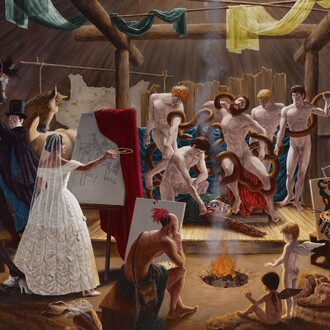At the top of the world, the Arctic spans over fourteen million square kilometers and includes eight countries. While its landscape seems harsh and inhospitable, over forty distinct culture groups have thrived there for centuries. Among the most beautiful and innovative is the diverse footwear and clothing created to meet environmental challenges and express culture meanings. Drawing from the BSM’s extensive circumpolar holdings and building upon information gathered during the Museum-sponsored field research trips to all Arctic nations, Art and Innovation showcases a vast variety of footwear, garments and tools, highlighting the artistry and ingenuity of the makers, and revealing different cultural identities, crafting techniques and spiritual meanings.
In tandem with the exhibition, we have launched a new blog series – The Arctic Landscape, which highlights the different geographical regions that make up the Arctic (Greenland, Alaska, Siberia, Sápmi and Canada) and features exhibition highlights and rare field images from the museum-funded research trips. The final post, Sápmi discusses the creative and innovative ways that Sami seamstresses combined textiles with reindeer skins to create beautiful and functional boots.
The Sami are an indigenous peoples of northern Europe whose traditional homeland, known as Sápmi, includes parts of Finland, Sweden, Norway and Russia. In 1999, on behalf of the Bata Shoe Museum Foundation, researchers Jill Oakes and Rick Riewe travelled to these regions in order to collect Sami footwear, as well as learn about bootmaking technology. During their field research, they worked alongside bootmakers to learn about the diversity of traditional footwear from across Sápmi. In doing so, they acquired about 170 artifacts for the museum. Several special highlight pieces from this collection are currently on view in our exhibition Art and Innovation: Traditional Arctic Footwear from the Bata Shoe Museum Collection.
















